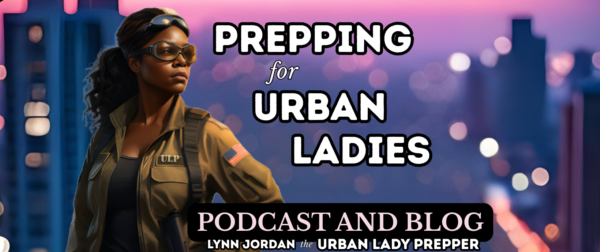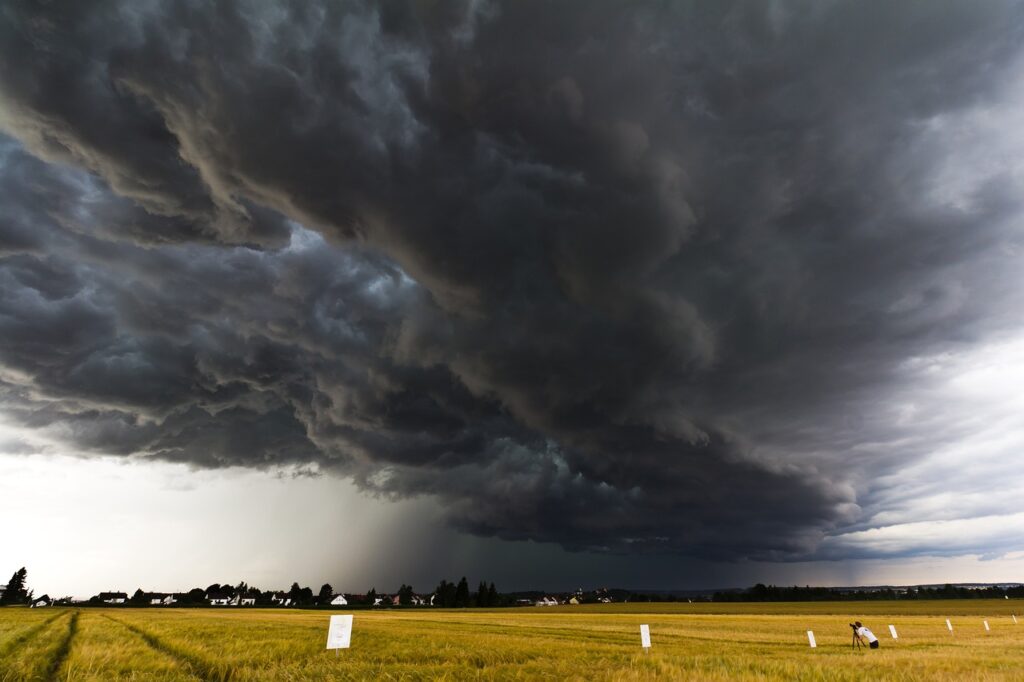.
The Changing Face of Preparedness
Take a look at most “prepper” content from a few years ago, and you’ll spot a clear pattern: lots of wilderness camo, heavy-duty gear, and macho hosts of a certain demographic. A listener of my podcast, Sara, wrote this to me: “Beyond grateful for the resources, wisdom, preparation, perspective, and unapologetic presence you bring to a normally super white, super dude space.“ Yep, the world of prepping definitely had a “look” to it!
But something big has shifted. Now, women of color—particularly Black women—are stepping out as dynamic, visible leaders in the preparedness world, reshaping not just who preps, but how to approach it in a more community-based, inclusive way.
The face of prepping is evolving fast, going from a niche and often exclusionary scene to a more accessible, inclusive community where safety, resilience, and practical wisdom are for everyone. I’m proud to be a part of this movement!

Why This Change Now?
I believe a perfect storm of events in the past decade pushed this shift. Political turmoil, social unrest, and natural disasters all uncovered just how unevenly prepared our communities can be.
- Political and Social Unrest: From 2016 onward, more Black women and people of color saw the need for personal readiness. The rise in hate crimes (up 17% from 2018 to 2019 according to the FBI), the 2020 protests, the Capitol riot, and the re-election of Donald Trump only fueled this urgency. Since 2020, Black women have become the fastest-growing firearm-buying demographic in the United States.
- Pandemics and Hurricanes: COVID-19 and climate-worsened disasters like Hurricane Katrina forced families to realize that waiting on outside help isn’t always an option.
- Systemic Exclusion: Many women of color recognized that emergency systems weren’t set up to support their needs. So they started creating their own.
It’s this mix of lived experience and practical foresight that’s made the movement stick—and made it innovate.
Community First—Not Stereotypes
For many women leading this transformation, prepping isn’t about stockpiling for Doomsday. Instead, it’s about mutual support and building safety nets together. When I became serious about prepping in 2020, there weren’t many lady preppers who looked like me and lived in the city, which inspired me to start Urban Lady Prepper. But some came before me, who are serious pros ready for when the SHTF, and we all can learn from them!
Take Zani Sunshine, a prominent Black woman prepper and survivalist, who’s inspired thousands to build food storage, invest in land, and work together instead of in fearful isolation. Her content, described by followers as “calm and secure instead of scared,” resonates for anyone seeking peace, not paranoia.
Kelli McGuffey Pilkington, founded the Black Homesteaders and Survivalists Facebook group. And there is Sharon Ross, the Afrovivalist, a huntress who grew up on a homestead. These ladies provide excellent information, from beginners to seasoned outdoorswomen.
Traditional prepping emphasized going solo; these new leaders prove there’s strength—and resilience—in numbers.

Diversity in Practice, Not Just in Numbers
It isn’t just about new faces. The approach and philosophy are different, too:
- Accessibility Over Extremes: Prepping isn’t reserved for those with land and cash to spare. My goal is to help urban women adapt strategies for apartments and city life, proving you don’t need a rural homestead to get started. But even when these other ladies go deeper into prepper territory, the overall message is that nothing is impossible once we prioritize preparedness as a means of survival.
- Tailored Skills: From building bug-out bags to learning self-defense and first aid, the movement welcomes anyone willing to learn, adapt, and share, encouraging others that self-sufficiency is essential—and we can’t count on others. Black women preppers run the gamut – from just stockpiling the basics, to hunting, trapping, fishing, and raising animals.
- There is a broader community around the concept of self-sufficiency. Prepping and homesteading often meld for an “all-rounder” approach to self-sustainability just as it is in the broader prepping community. There are many social media accounts featuring Black women homesteaders. Feel free to check out my interview with Kim Butler, master gardener and founder of Urban Homestead Hub.
- Empowerment, Not Fear: The goal is to address the real, immediate risks faced by women and families—financial hardship, food insecurity, neighborhood safety—and give people tools, skills, and confidence to respond. As the saying goes, “Stay ready so you don’t have to get ready.”
There’s room for every background, budget, and comfort level.
Breaking Into the Industry—and Reshaping It
As women of color become more visible in prepping, businesses and brands are taking note. The prepping economy now matches the outdoor recreation market and is expanding even faster. Products, online resources, and influencer content are all shifting to match a wider, younger, and more diverse audience.
According to recent stats, about 1 in 16 Americans sees themselves as a prepper—and four out of five have taken some step toward personal emergency readiness. While prepping once had its roots in Texas and the mountain West, some of the fastest-growing prep communities now are in coastal cities among young professionals and families.
This rising visibility isn’t just about trends—it’s pushing the industry toward better products, smarter resources, and more realistic advice for everyone.

An Empowering, Community-Based Approach
I love seeing established and newer voices (like me) making the movement their own. By putting community resilience ahead of individual doomsday prepping, women of color are shifting the narrative:
- Preparedness is for every budget, location, and experience level.
- Community support and education matter as much as physical supplies.
- Prepping is a response to real-life challenges and systemic inequities, not just disaster movies.
- Everyone deserves the peace of mind that comes from being ready.
- It’s not about fear; it’s about being ready.
Takeaway: Join the Movement
If you’re ready to start your preparedness journey, remember you’re not alone—and you don’t have to fit any stereotype. The new prepping wave is practical, community-focused, and welcoming to all. Check out these two great articles about the rising trend of Black lady preppers here and here.
Ready to get started? Check out our Prepper Checklist (password: StayReady) for simple action steps, or browse more blog posts for inspiration and guidance.
Want to stay in the loop? Sign up for our newsletter and don’t miss our latest podcast episode, where I highlight women prepping for empowerment, not fear.
Because prepping isn’t about perfection—it’s about progress, together.


